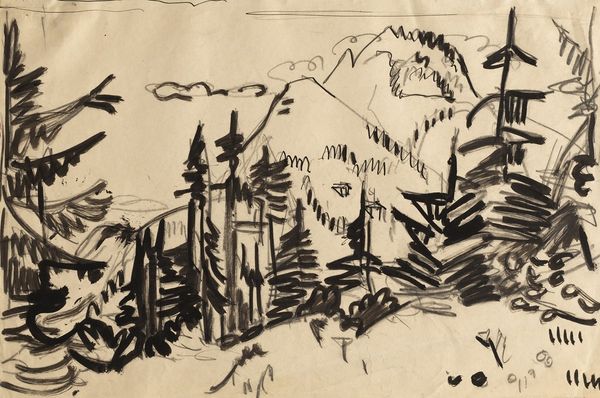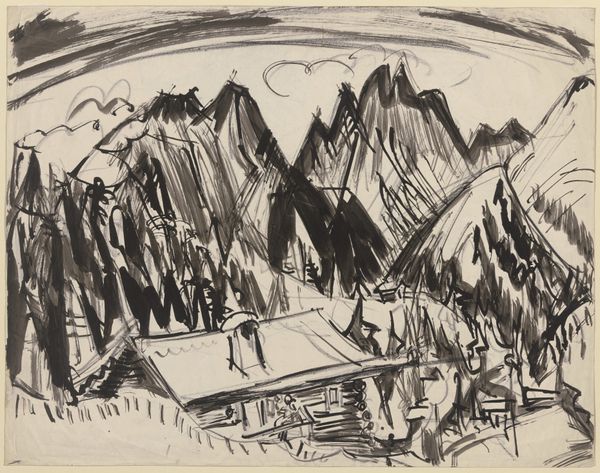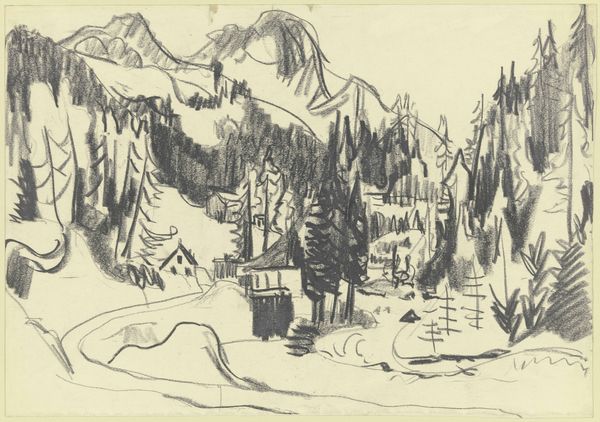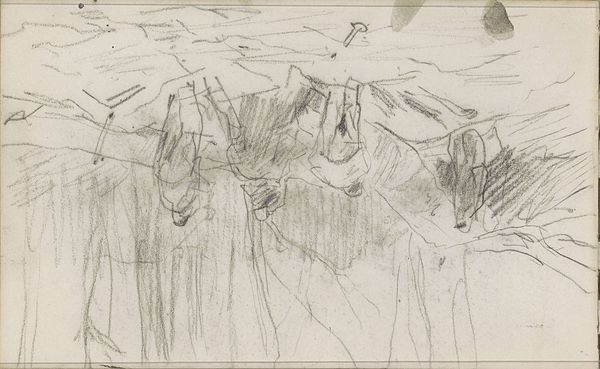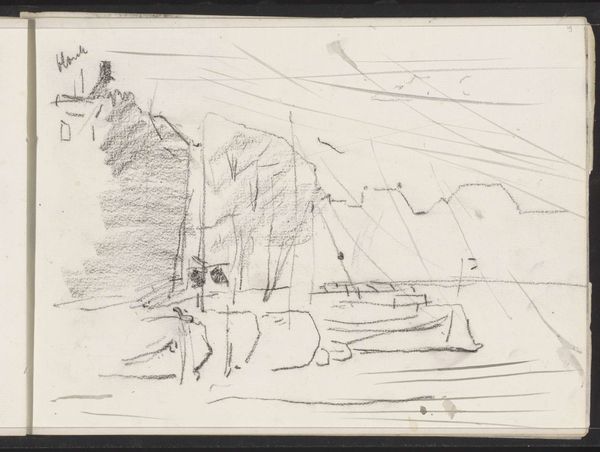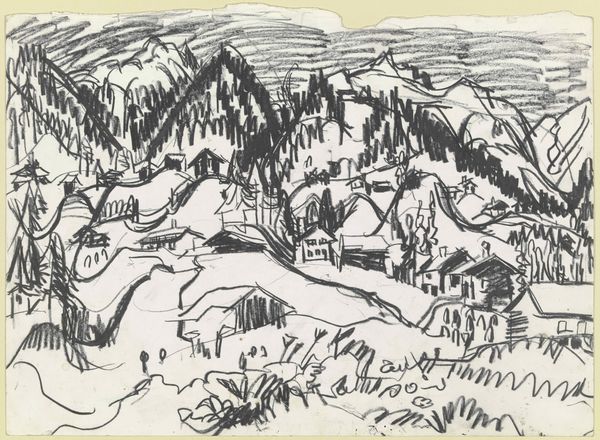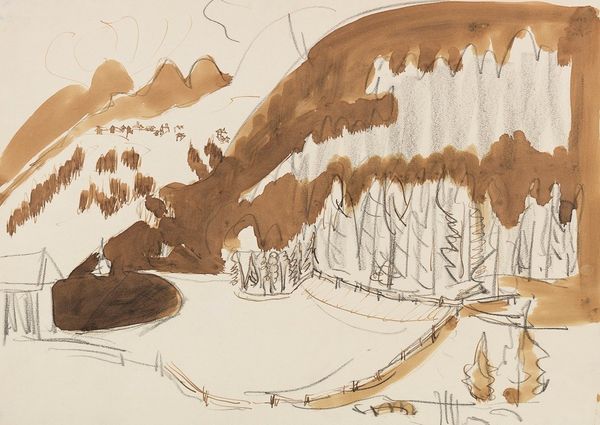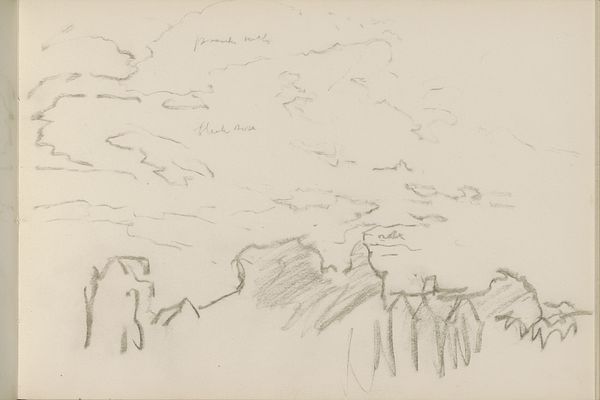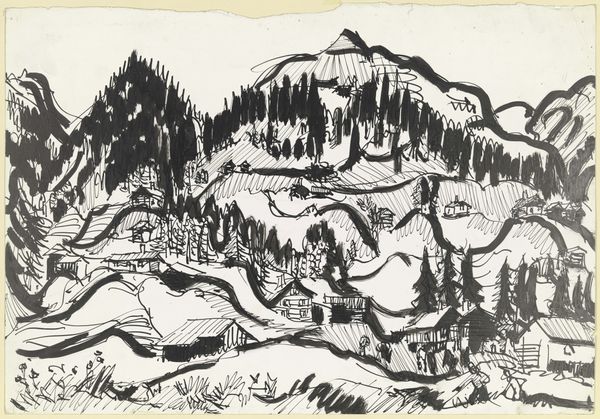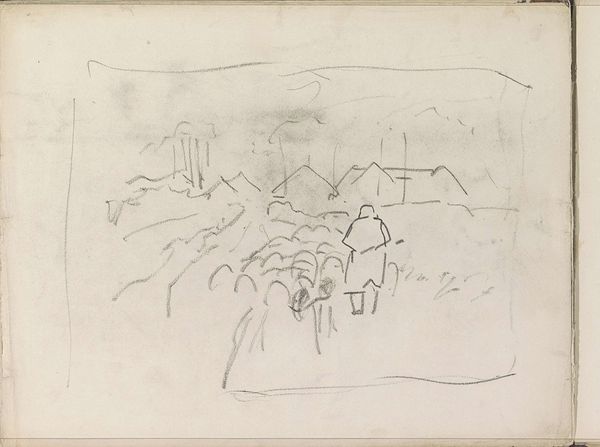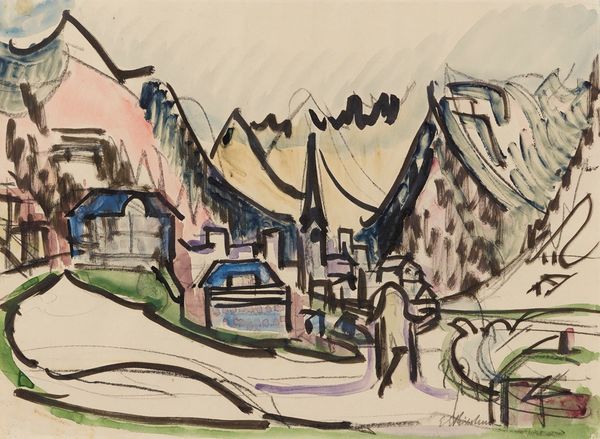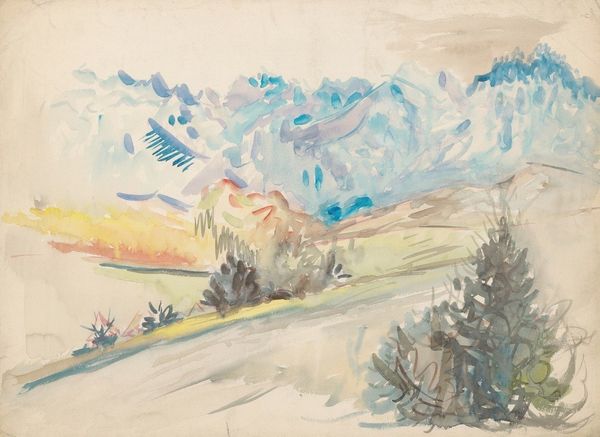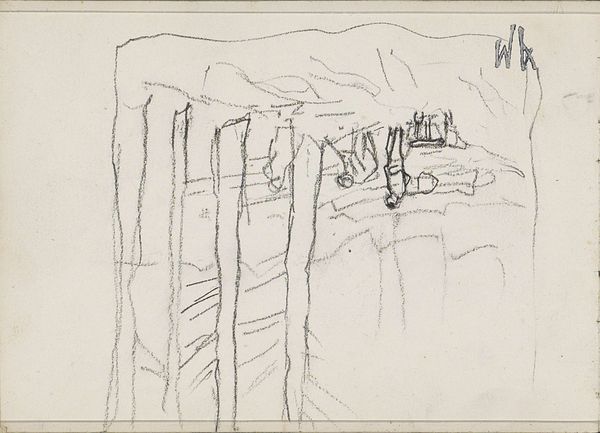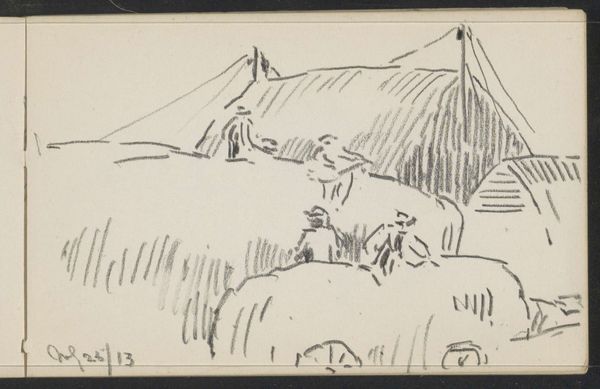
drawing, coloured-pencil
#
drawing
#
coloured-pencil
#
landscape
#
german-expressionism
#
abstract
#
form
#
geometric
#
expressionism
#
line
Copyright: Public Domain: Artvee
Curator: Let's turn our attention to Ernst Ludwig Kirchner's "Stafelalp," a colored-pencil drawing dating back to 1918. Editor: Immediately, I'm struck by its sense of immediacy, of being captured quickly, perhaps even impulsively. The colors, though muted, evoke a stark, almost melancholy feel. Curator: Indeed. This work emerges from Kirchner's period of convalescence in the Swiss Alps, recovering from a mental breakdown brought on by his experiences in World War I. You see him grappling with trauma through the visual language of Expressionism. Editor: So, this seemingly simple landscape isn't just a scene, it's a symbol, too? The jagged peaks outlined in blue, the scrawled trees—do these represent a fracturing of the self? The isolated cabin in the foreground perhaps hinting at refuge or maybe isolation. Curator: Precisely! The "Stafelalp" isn't just any mountain scene, but a record of the artist's mental and emotional state within a historical context. The war devastated an entire generation and Kirchner became a victim as much as a product of it. We understand through sources and his later art that he was dealing with feelings of being disconnected from the world around him. Editor: That rawness, that direct connection between emotion and representation...It is apparent. There is something inherently psychological about it. You see him wrestling with not just formal composition but existential themes, particularly through these almost violent marks defining these peaks. Curator: And observe the distribution and style of colour. Kirchner used color here to not simply mimic the appearance of his subject, but to construct and expose inner, emotional landscapes for all to witness. Editor: Seeing it this way, you feel a depth of symbolic meaning in even the simplest strokes, each a layer added to the narrative of survival and disillusionment following the years of upheaval from the Great War. The symbolic, rather crude form almost takes precedence over conventional modes of representation in order to better convey his mental turmoil. Curator: I think examining Kirchner's broader oeuvre shows how central a work such as this is for Expressionist art and what it can achieve beyond depicting visible reality. It serves to expose mental ones as well. Editor: Ultimately, looking at the drawing now is like seeing, through color and jagged shapes, both a man's anguish and the fractured spirit of a generation recovering in the long shadow of a global cataclysm.
Comments
No comments
Be the first to comment and join the conversation on the ultimate creative platform.
